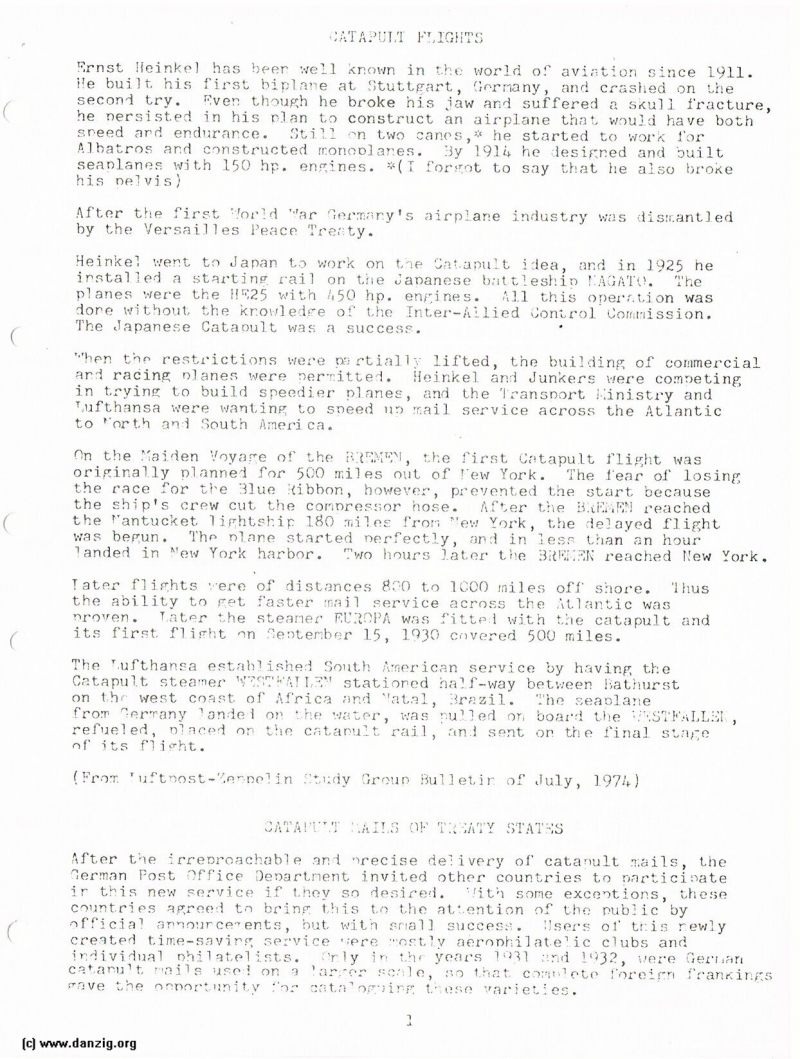
CATAPULT FLIGHTS
Ernst Heinkel has been well known in the world of aviation since 1911. He built, his first biplane at Stuttgart, Germany, and crashed on the second try. Even though he broke his jaw and suffered a skull fracture, he persisted in his plan to construct an airplane that would have both speed and endurance. till n two cares, he started to Work for Albatros and constructed monoplanes. By 1914 he designed and built seaplanes with 150 hp. engines. ( I forgot to say that he also broke his nelvis)
After the first World War Germany’s airplane industry was dismanted by the Versailles Peace Treaty.
Heinkel went to Japan t work on the Catapult idea, and in 1925 he installed a starting rail on the Japanese battleship AGATO. The planes were the H25 with 450 hp. engines. All this operation was done without the knowledge of the Inter-Allied control commission. The Japanese Catapult was a success.
When the restrictions were martially lifted, the building of commercial and racing planes were permitted Heinkel and Junkers were comiting in trying to build speedier planes, and the ‘Transport ministry and Lufthansa were wanting to speed up mail service across the Atlantic to north and South America.
On the Maiden Voyage of the BREMEN the first Catapult flight was originally niannel foe 500 miles nut of New York. The fear of losing the race for the Blue ribbon, however, prevented the start because the ship’s crew cut the compressor hose. After the BREMEN reached the Nantucket lightship 10 mile from New York, the delayed flight was begun. nlnne started nerfectly, and in ±ess than an hour landed New York harbor. Two hours later the BREMEN reached New York.
Later flights ere of distances 800 to 1000 miles off shore. Thus the ability to pet faster mail service across the Atlantic was proven. Later the steamer EUROPA was fitted with the catapult and its first flight on September 15, 1930 covered 500 miles.
The Lufthansa established South American service by having the Catapult steamer WESTFALLEN stationed half—way between Bathurst on the west coast of Africa and Natal, Brazil. The seaplane from Germany landed on the water , was ruled on board the WESTFALLEN , refueled placed on the catapult rail , and sent on the final stage of its flight.
(From Luftpost Zeppelin study Group Bulletin, of July, 1974)
CATAPULT MAILS OF TREATY STATES
After the irreproachable and precise delivery of catapult sails, the German Post Office Department invited other countries to participate in this new service if they so desired. With some excentions, these countries agreed to bring this to the attention of the public by official announcements, but with small success. Users of this newly created time-saving service were mostly aerophilatelic clubs and individual philatelists. Only in the years 1931 and 1932, were German catapult mails use one on a larger scale, no that completely foreign frankings save the opportunity cataloging use varieties.
Danzig Report Nr. 16 – 4th Quarter 1977, Page 12.
Hits: 3793
Added: 05/06/2015
Copyright: 2025 Danzig.org

